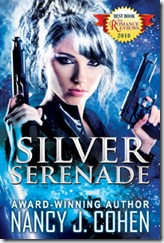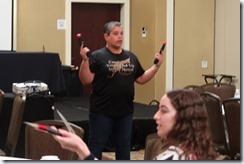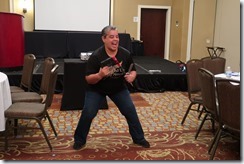When you’re writing a series, you need to be aware of scenes written in previous books that might impact your current story. Has your sleuth encountered a similar character before, researched a familiar topic, or visited the same place? If so, this might change how you approach a scene for your work in progress.
During my revision for Star Tangled Murder, #18 in the Bad Hair Day Mysteries, I had two scenes that made me realize more research needed to be done. One involved a local history museum and the other a casino run by a Native American tribe.
It suddenly hit me that this wasn’t the first time for either scenario. Marla, my hairstylist sleuth, had an episode in the same museum curator’s office in Trimmed to Death. And she’d interviewed a shaman at a Seminole casino in Hanging by a Hair. I realized I had better look up what I wrote before so I don’t contradict these previous settings.
My casino descriptions didn’t match. This fix was easy. Billy, the shaman in the current story, would work at a different gambling hall. I added a few lines bringing back Marla’s memories of visiting the other place for a prior case.
Regarding the local history museum, again my description didn’t match what I’d written before. That meant I had to modify what I’d written this time around since it was the same place. No need to reinvent the wheel in this instance.
The same precautions apply to conversations. Are you relating what two characters might already know about each other? How much background do you need for new readers without repeating information? This requires a delicate balancing act. It’s best to sneak in this info in small doses.
These are only a few of the hazards in writing a series. You have to remember what came before not only so you don’t repeat yourself but also so you get descriptions right and have your character reflect upon similar incidents from the past.
GIVEAWAYS
Oct. 1 – 18 Booklovers Bench
Enter to win a free book at Booklover’s Bench https://bookloversbench.com/contests/win-a-free-book-oct-2022
Oct. 7 – 31 A Scary Good Giveaway
Enter Now to win a $400 Amazon eGift Card from The Kindle Book Review in A Scary Good Giveaway! Go here: https://www.thekindlebookreview.net/a-scary-good-400-giveaway/
STARTS TOMORROW! Oct. 17 – 26 First in Series Mysteries with Humor
Enter to win a copy of PERMED TO DEATH, book #1 in my Bad Hair Day series, along with 45+ First in Series Mysteries with Humor AND a brand new eReader from BookSweeps. https://www.booksweeps.com/giveaway/october22-win-a-bundle-of-mysteries-with-humor/


































